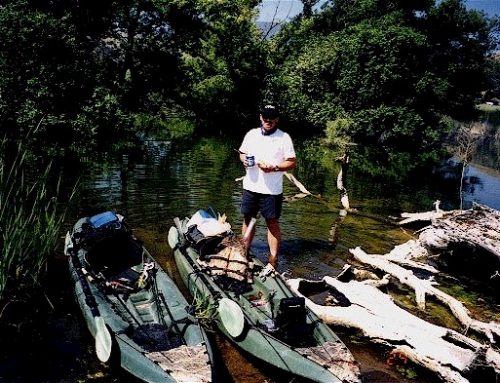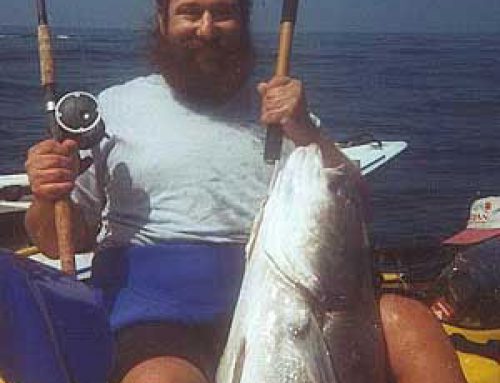With paddle, peddle, power, sail, length and weight (of both angler and kayak), budget, personal needs and fishery options, there’s a lot to consider in selecting a first fishing kayak.
There is no single “Best Fishing Kayak” just some that are designed and made better than others. The best kayak is simply the one that fits each angler’s particular needs, at any price point. Claims of any model being “the best” are subjective and the position of the claimant. Objectively, there are some kayaks that by virtue of design, manufacturing process, quality of materials and proven history, last longer than others.
As a rule, Kayakfishing.com has never recommended or endorsed new kayak models until they were consumer proven in the field (usually about a year) and the manufacturer has a chance to work out any initial bugs or make changes. Part of the process, that happens sometimes and is not necessarily a sign of an inferior company.
Kayak Weight- A serious consideration for many anglers, light boats don’t have as much plastic and won’t take the wear and tear (last as long with heavy use) as a heavier boat. Weight is often a factor for portage and simply loading and unloading the kayak.
New Kayaks-Most media exposure for kayaks seems to be generated by a handful of companies and give the impression that the “best” fishing kayaks start at over $1000. That just ain’t the case though and anyone who visits Dick’s or Costco knows there are single kayaks available for as little as $300-$400. We’ve seen tandems too at that price and often, backrests and paddles are included.
While the expression “you get what you pay for” is as true with kayak quality as anything else, some of those “affordable” kayaks are well designed, seaworthy and fishable. What they may lack is the highest quality plastic and/or much of it plus, high quality ultraviolet inhibitors for longer life. Other bargain kayaks are not so well made so do your homework searching user reviews from anglers who have actually fished the model. Stored on their side, out of the sunlight and cared for in the field (no dragging, dropping or use of wheel carts that utilize the scupper holes), many of those kayaks should remain in good condition for many years. IMAGE All fishing kayaks should be routinely inspected for wear, damage and loose fasteners. LINK Kayaks with lots of road hours on the truck, trailer or roof racks should be inspected more frequently. A kit with the attachment loops (or pad eyes), nuts, bolts, anchors, elastic cord, etc. and rivets w/gun will fix bummers at home and in the field. IMAGE
Outfitting your own kayak-
Used Kayaks-Just about every popular fishing model, time tested and long proven, can be purchased “pre-owned”. Like scuba, surfing and other outdoor pursuits, people buy this stuff , use it once or twice and a year or 2 later sell it on Craigslist and regional kayak fishing forums in near new condition. Used kayaks sell at a fraction of the list price and often come with a slew of accessories like backrest, paddle, drybags and a PFD. Age of kayak, UV damage and general condition all need to be inspected. As well, some models have been subject to recall and other issues in past years so researching the model and year of manufacture on any used kayak model is recommended. Age is not necessarily a factor and we’ve purchased 18 year old kayaks that look good, were stored well and have many seaworthy years remaining. Our buddy Lou Dog was reading meters and found a near 20 year old Scupper Classic lodged between a house and garage (out of direct sunlight) that still had the paperwork inside. Brand new condition, we believe he lied about taking it out “once or twice”. The owner, way past his prime paddling days, took $200 for the kayak.
Composite Kayaks-These are the “top shelf” fishing kayaks in terms of materials used and have been around since the late `90’s. These boats are light and Spike says he “always liked those Eddyline composite kayaks for anglers who take fastidious care of their boats. Strong, good performance, fishable and light as a feather.” A handful of composite fishing kayaks are available from as many companies. Several South African manufacturers of fishing “skis” (coastal performance composite fishing kayaks) have failed to gain much of a following after introducing craft to the U.S. several times in the past 15 years. The latest offerings from Africa appear to be much better designed than early models, closer to a kayak than a board .
Try before you buy whenever you can!!! Attend a kayak shop “Demo Day” event or do a 1-2 hour rental of the models you’ll consider. Most kayak dealers credit rental fees to a purchase and nurturing a relationship with a quality kayak dealer of good reputation can be a real asset. Although rare, finding a kayak dealer who offers on-the-water demos at the shop is a find.
From box stores to the big outdoor stores plus kayak and tackle shops, the choices are seemingly endless but in 20 years, the proven models that have been largely accepted by the kayak fishing community are relatively few, especially among the coastal fisheries. In ponds, lakes and rivers, anglers fish everything that floats.
Bad Kayaks- Direct referrals to angler inquiries has been a staple of Kayakfishing.com since day one. There has always been a phone # and email contact published, to reach a guide, and always will be. We recommend all the proven kayaks as we know them for fishing without bias. Recommendations are based on seaworthiness, fishability, quality of construction, proven consumer history, intended fishery. Any boat we recommend should still be around if we cross paths in 10 or 12 years. Some will last for 40+ years. We’ve seen anglers replace failed kayaks (from a few companies with higher priced kayaks and notorious product issues) a few times WITH THE SAME MODEL, clear testimony to angler loyalty to their kayaks.



